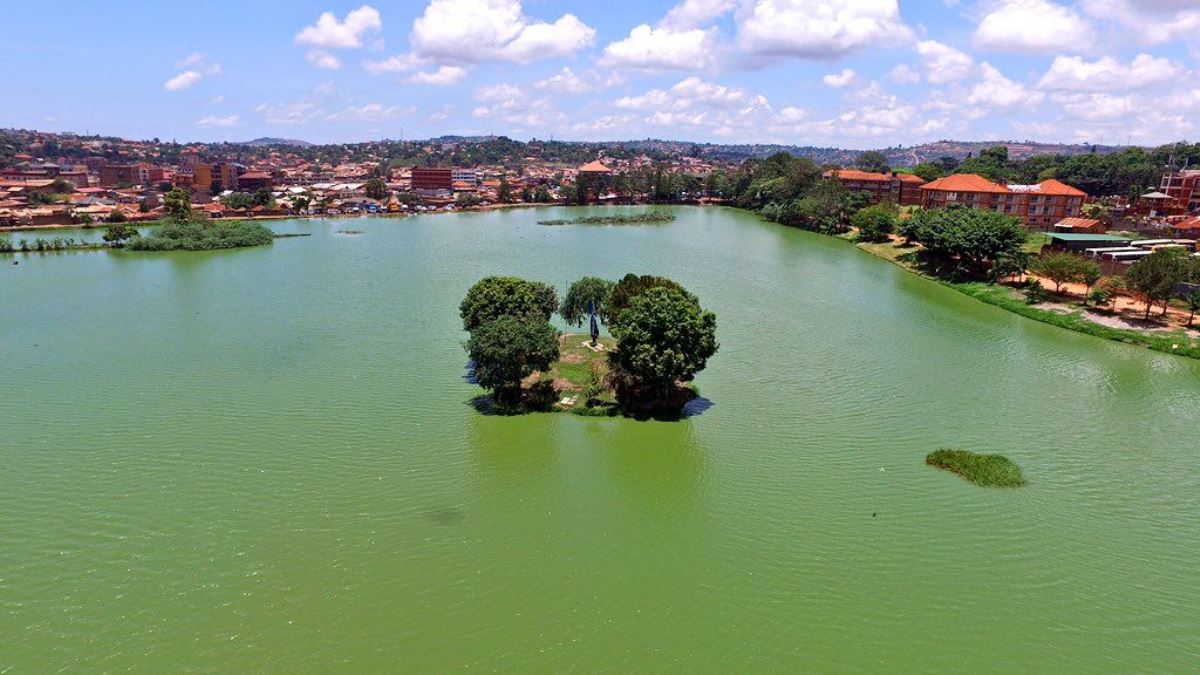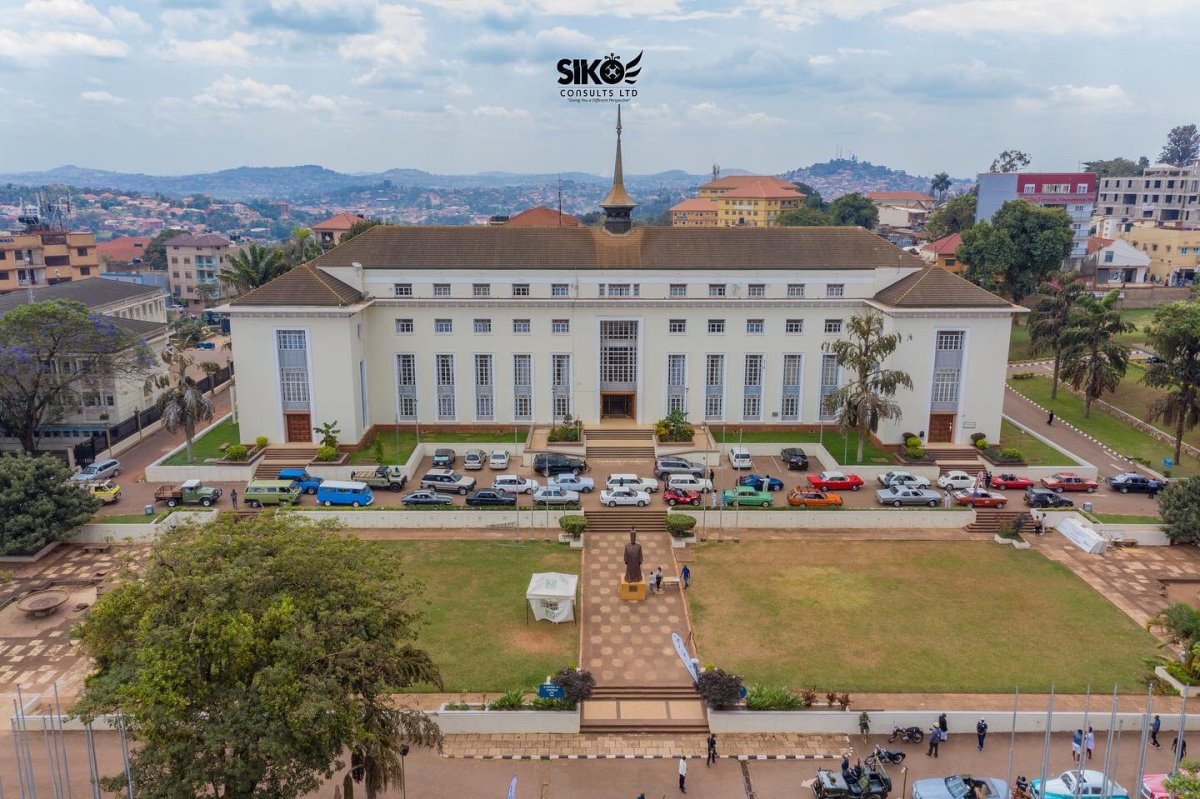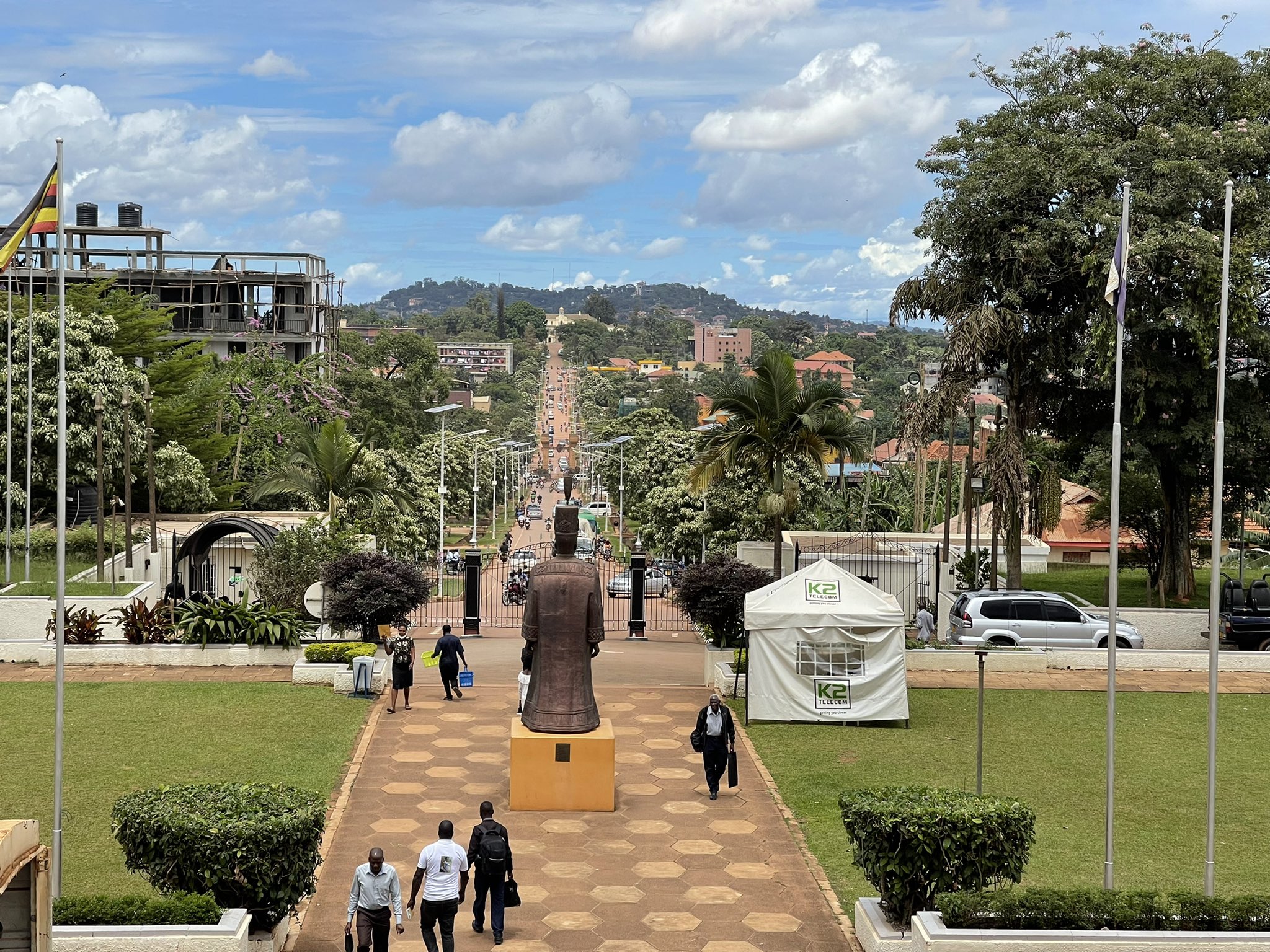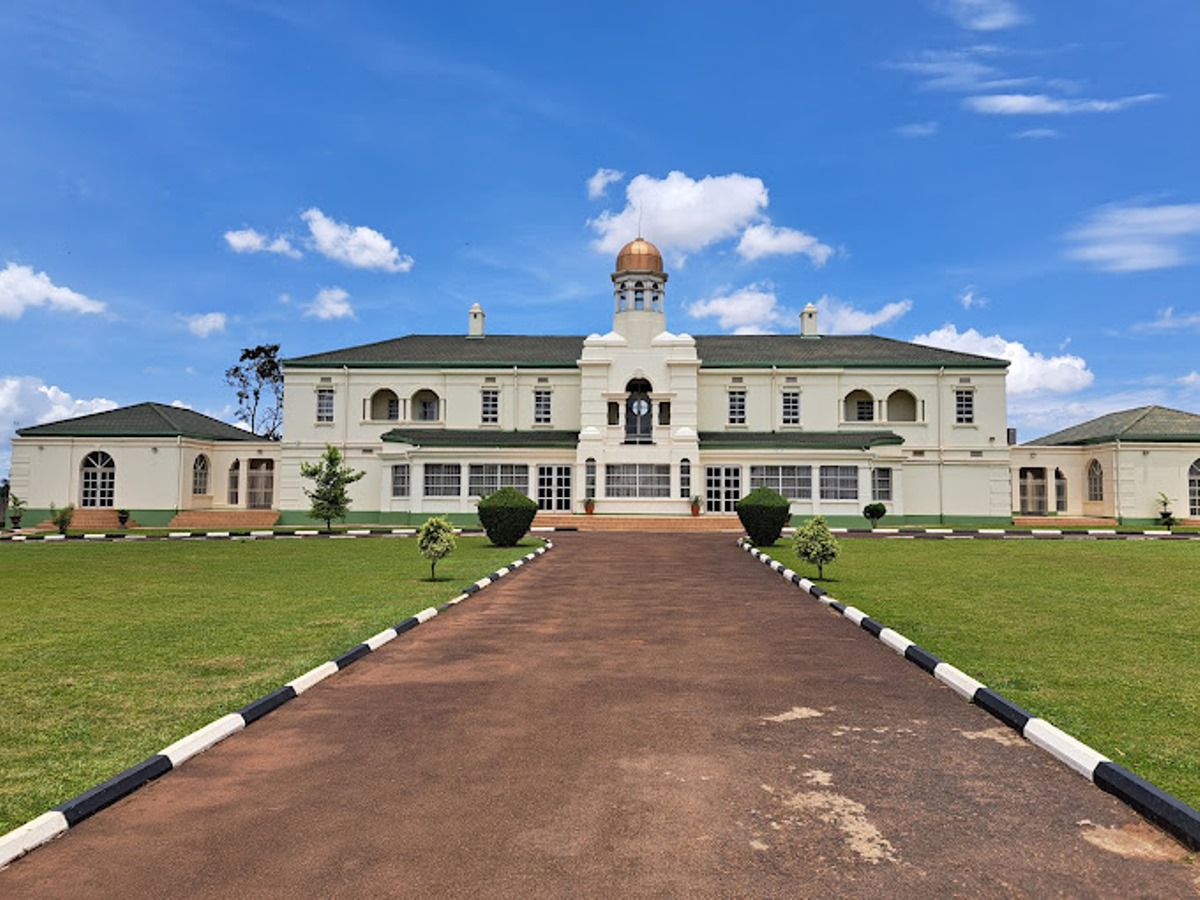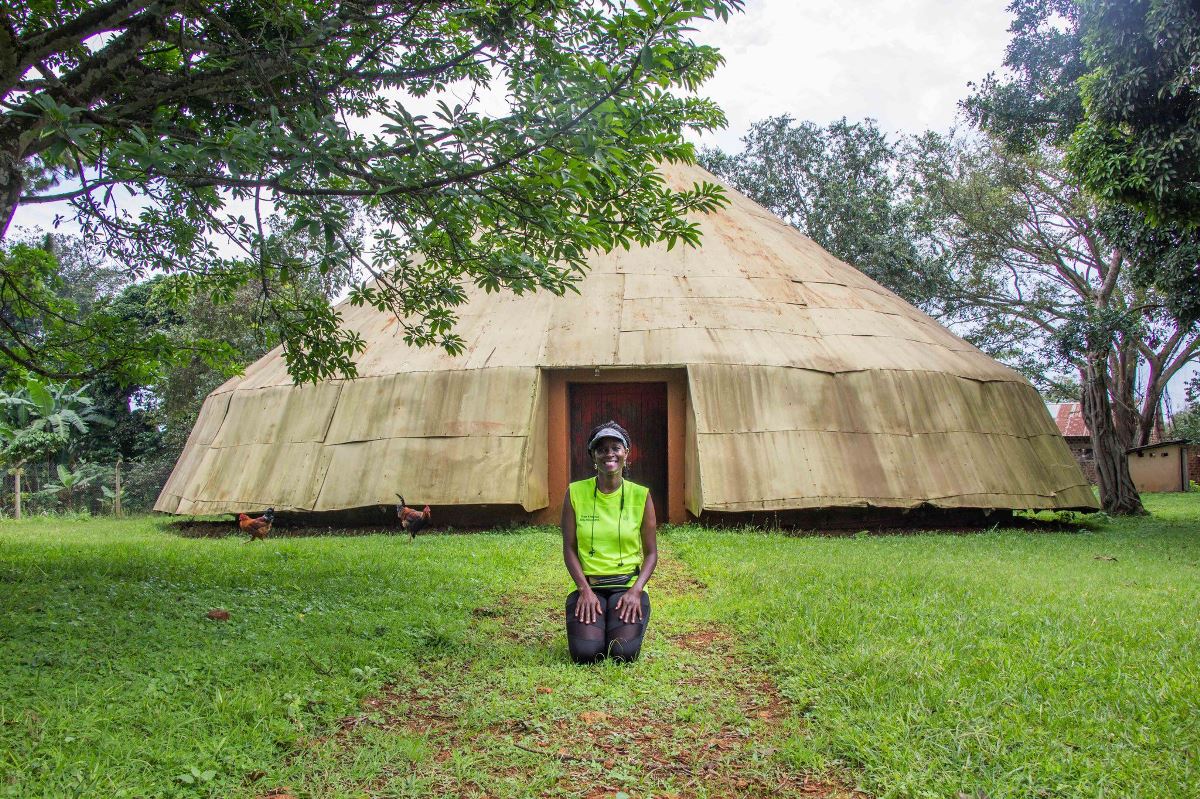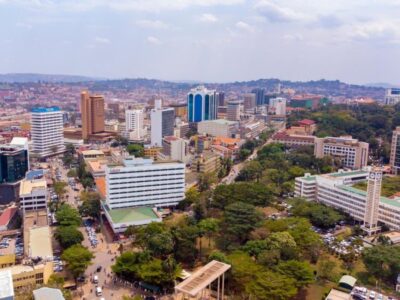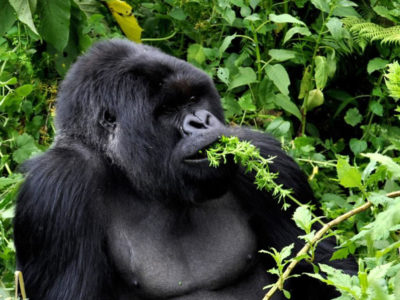Itinerary
Site 1: Bulange Lukiiko (Parliament)
Inspired by designs seen by Ssekabaka Mutesa II during his exile in Scotland, the current Lukiiko (Parliament) building was completed in 1958 and serves as the administrative headquarters of the Buganda Kingdom. The building has no upper floors as in Kiganda culture, nobody sits above the Kabaka (Kabaka tatulwa ku mutwe). The Lukiiko has been the site of many historic events especially leading up to Uganda’s independence in 1962. All this was surpassed by the 1966 invasion of the Lubiri which resulted in Bulange being turned into the headquarters of the Ugandan Army.
Site 2: Royal Mile
Connecting the Lukiiko to the Lubiri, the Royal Mile is another item inspired by Ssekabaka Mutesa II’s 1953 exile in Scotland, and is fashioned after the ‘royal mile’ that connects the Holyrood Palace to the Edinburgh Castle. For long, this mile-long stretch was known as the ‘Kabaka’njagala’ due to the shade offered by the 52 candlenut trees (each representing a Buganda clan). More recently, the royal mile has been adorned with sculptures of all the 52 clans, incl. details such as each clan’s role in the kingdom. The half-way point of the royal mile is marked by a unique roundabout which only the Kabaka himself may pass through.
For the local brew lovers: Prepare for a very early ‘one-for-the-road’ with a brief stop at the local brew (mwenge bigele) hole.
Site 3: Lubiri Palace
Back in the day, Buganda kings would freely establish palaces (Lubiri) pretty much wherever they pleased. In 1922, Kabaka Chwa established the Lubiri at Mengo as the first modern structure palace in Buganda, drawing inspiration from his 1913 visit to England. The Palace was attacked by Obote forces lead by Idi Amin in 1966 and still bears war marks as well as an underground prison and torture chambers from the military occupation following the 1966 invasion of the Lubiri. In addition to a museum detailing the kingdom’s culture and traditions, the palace holds a fire (Ekyooto Ggombolola) that is said to have been burning since the inception of the Buganda kingdom, only stopping when a king is dead. The fire is maintained by the Nakinsinge Clan.
Site 4: Kabaka’s Lake
Many stories abound about the motivation Kabaka Mwanga had in getting his subjects to start digging up this site, which until this day remains the largest man-made lake in Uganda. However, few appreciate how intricately the digging of this lake played into the eventual exile of Mwanga. In a way, he possibly could have dug his own grave with the lake that has lived on long after him. We will be exploring all the key stories around this lake when we make a brief stopover. A few braver ones may test out a ride on dug out canoes to go to one of the three ‘islands’ on the lake. A lucky birder may also sight some of the numerous bird species that have settled around the water body.
Site 5: Mackay Cave
The area around Mackay’s cave is where the first printing was done in Uganda. In fact, most of the early bible translations to Luganda took place here. Other stories have it that as Anglican and Catholic followers were being hounded and killed, one of the most eminent missionaries escaped the storm by hiding out at his cave in Nateete. A church and school stand today in honour of the most practical missionary of his time.
Site 6: King’s College Budo
Founded in 1906 by Henry Walter Weatherhead but started in 1897 by Missionary CW Hattersley, King’s College Budo started in Mengo as a formal school with more than 3,000 sons of Chiefs and Kings from across Buganda and Uganda at large.
King’s College Budo’s existence on the King’s Hill is credited to the support offered by Katikkiro/Regent Apolo Kagwa. Its first-class and dormitory played host to 23 boys. In 1933, KCB saw the first 6 girls admitted setting the pace for Co-Education in Uganda.
While the school was originally set up to cater for Chiefs, Kings and their sons, it grew to encompass anybody who dares to become a Chief/Leader, with 3 of Uganda’s 8 Presidents having been Budonians, alongside Rhoda N Kalema (Uganda’s First Female Politician) and Jennifer Musisi (first ED KCCA).
Gakyali Mabaga (“So little done, So much more to do”).
Site 7: Naggalabi Coronation Site
Naggalabi was the scene of the first major battle of a Buganda king when Kintu fought off his brother Bbemba. Today, it remains a site where Buganda kings are crowned. Among many stories, you can learn about the history attached to Nnebalamye Mayanja, a road that the Kabaka only uses once in his life; Ennyumba Buganda where Kabaka gets ‘akoogero’; Mboneredde – a tree believed to be the oldest in Buganda; and why no one in the area is permitted to touch a woman before the King completes his coronation period, also known as “Ennaku Ez’obwerinde” (days of tension).
The first part of this trail takes you through the city streets. With that in mind, we can recommend doing this one early (to beat the traffic) or on the weekend.
About this activity
- When you book this tour, we expect a deposit of 50%. The balance must be paid before arrival.
- Payments can be made via mobile money, bankwire or credit card
- Check with travel consultant to see starting times.
- Live tour guide
- English

